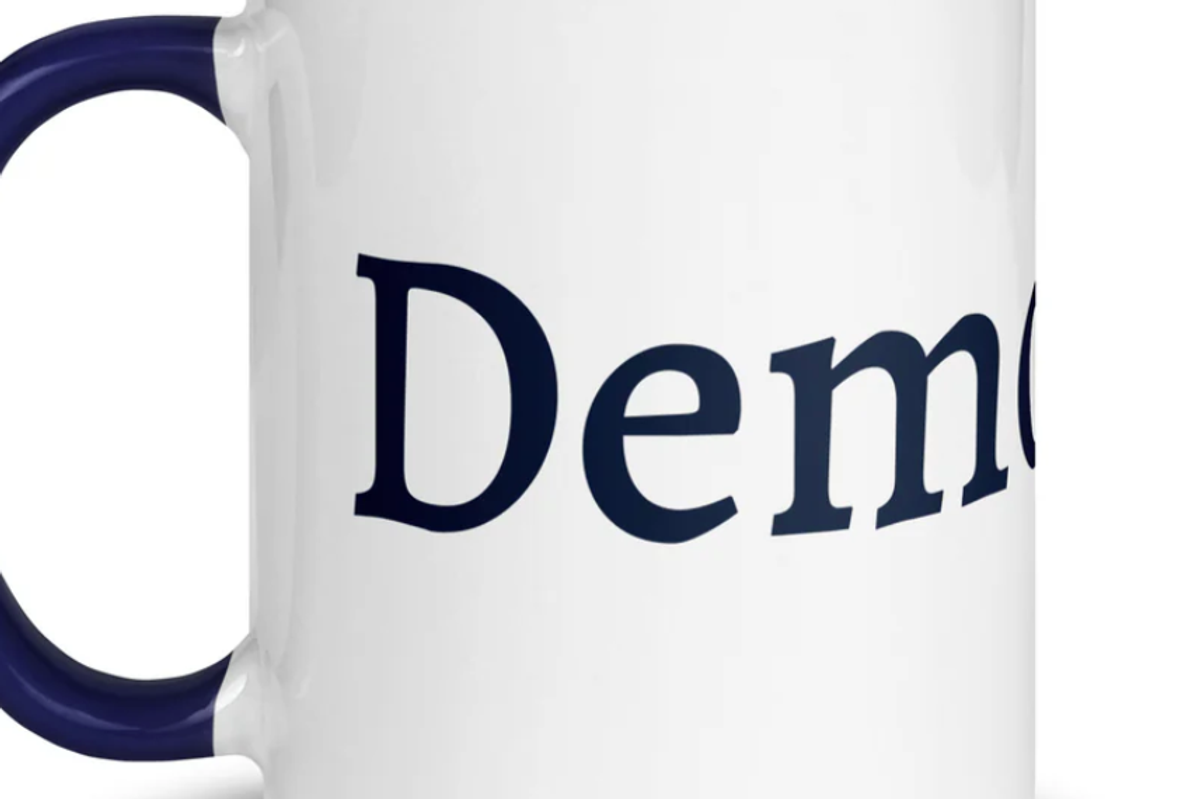By Katherine Long, The Seattle Times (TNS)
SEATTLE — Dena DeYoung traces her trouble with math back to sixth grade, when a well-intended placement test showed she was smart enough to do advanced work.
And for several years, DeYoung did well. But when she reached high school, math became her worst subject. Lost by the logic, unable to imagine how what she was learning would ever come into play in the real world, her math grades plummeted.
“I just never got it,” DeYoung said. “I was barely scraping by. It was just a nightmare.”
DeYoung eventually dropped out of her Shoreline school, and while math was not the only reason, it didn’t help. Instead of a high school diploma, the promising student earned a General Educational Development degree, or GED.
More than any other subject, math trips up students who might otherwise thrive in college, especially those who don’t plan to go into technical careers that require proficiency with numbers.
Failing the state’s math test keeps hundreds of students from graduating from high school each year, even when they’ve met every other requirement. Math is the reason why half of Washington’s high school students who enter community college must take remedial classes — which few ever pass, even after years of struggle.
A lot of effort has gone into thinking — and arguing — about how best to teach math, hoping to keep it from being such a barrier to higher education. But the math problem also has caused leaders of Washington’s community colleges to ask a fundamental question: How much math, and what kind, should be required for a student to earn a college degree?
Their answer, increasingly, is that there is no one answer.
Students who are studying to become nurses, social workers, early-childhood educators or carpenters may never use intermediate algebra, much less calculus. Yet for years, community colleges have used a one-size-fits-all math approach that’s heavy on algebra and preps students for calculus.
That’s starting to change in a few pioneering schools that are overhauling what math they teach and how they teach it. Some colleges, for example, have started to offer a math sequence that focuses on statistics, and persuaded the state’s four-year colleges to accept it as a college math credit. Others are offering a learn-at-your-own-pace approach.
These experiments, to date, are small but encouraging. The word is spreading about algebra alternatives, many of which include the kind of math students are more likely to need, such as probability and margins of error in opinion polls. Students are flocking to such classes — and they’re passing at much higher rates.
One study found that a statistics-focused class, identical to one offered at Seattle Central College, had triple the success rate when compared with the traditional math sequence, and students finished math in half the time.
DeYoung, now 26, enrolled in Seattle Central’s version of that sequence last year, called Statway, but with the nagging concern that she’d soon hit a wall — just like in high school.
But that didn’t happen.
“In the first quarter, I realized there isn’t something wrong with me,” DeYoung said. “I just needed a different approach.”
Seattle Central is one of 19 colleges nationally using Statway, which was developed by the Carnegie Foundation. (The foundation has also developed a program called Quantway that uses math skills to solve real-world problems.)
It’s one of the programs highlighted in a new math strategic plan that calls for all of Washington’s 34 community and technical colleges to find new, innovative ways to approach math.
“For too many students, the pre-college math experience at community and technical colleges has been frustration and failure,” the plan notes.
The beginnings of that plan reach back to 2009, when the State Board for Community and Technical Colleges began its latest round of puzzling over how to help more students pass.
In the plan, the State Board encourages colleges to find ways to accelerate a student’s path through math. As a result, some are allowing students to take both pre-college math and college-level math in the same quarter. Others, like Big Bend Community College in Moses Lake, offer math that doesn’t follow a rigid schedule — students do as much math as they can complete in a quarter’s time.
The vexing issue of students getting stuck in remedial math is not new. It’s long been recognized as a problem, but one without a clear solution. Now colleges have models to try.
So far, 14 schools in Washington have made learn-at-your-own-pace math widely available to students. Statway is offered at another three.
Last winter, more than four times as many students signed up for Big Bend’s learn-at-your-own-pace math classes, called “emporium math,” as traditionally taught and online-only courses.
Statway folds remedial math and one-quarter of college math into a three-quarter series, which satisfies the requirement that students pass one quarter of college math to graduate. In Statway, students study statistics used in everyday life — in polls and studies, for example — and learn how to analyze data and make inferences.
It is, simply, “the best math for citizens,” said Seattle Central Statway instructor Paul Verschueren.
Verschueren believes students often struggle with high school algebra because they’re taught to memorize formulas. And while that’s efficient in the short term, he said, students don’t develop an understanding of the underlying concepts. Statway, in contrast, aims to build math intuition.
“People don’t understand how malleable numbers are,” he said. “We have petrified students who are always afraid of the wrong move.”
One other possible advantage: Statway students stay together through all three quarters, and over those nine months, students get to know each other and their instructor, which helps their confidence and makes it easier to lean on one another for help.
“It’s more like real-life math,” said Seattle Central student Shayla Martin, 34, who is working on a bachelor’s degree in applied behavioral sciences. “It’s the first time I’ve ever used the word ‘interesting’ to describe a math class.”
Should Statway count as a math credit? All of the state’s public four-year universities accept it, including the University of Washington. But the UW is doing so on a three-year trial basis.
Janice DeCosmo, a UW associate dean who has a leading role in deciding which community-college courses are transferable for UW credit, calls Statway “a very engaging curriculum,” but warns that it can limit students’ career choices because it doesn’t prepare them to take calculus.
To be accepted as a freshman or transfer student at the UW, all students must have intermediate algebra or its equivalent on their transcripts. That’s because many non-math courses — in sociology, geology and other sciences — depend on an understanding of algebra. The version of Statway offered in Washington’s community colleges includes extra lessons in algebra, which is why the UW accepts it as a transfer credit. (Along with Seattle Central, Statway is also offered at South Seattle and Tacoma community colleges.)
Even some Statway instructors say the class — while important — isn’t really a math class. Seattle Central instructor Bryan Johns, for example, thinks of the course as a logic and communications class because the math involved is so basic.
But it’s clearly helping students get beyond remedial math, and on to credit-bearing courses.
The first year Statway was offered at Seattle Central, 58 percent of students passed the three-class series. By the third year, 84 percent of students passed. By comparison, only between 11 and 15 percent of students who need to take remedial classes ever finish those courses, and complete one quarter of college math by the end of one year.
While Statway re-imagines what it means to be math literate, the emporium program at Big Bend Community College is rethinking the way math is taught.
The Moses Lake college still offers traditional courses made up of three pre-college algebra classes — introduction to algebra, and algebra I and II.
But it is having more success when students take those classes using videos and computers.
In emporium math, topics have been chopped up into mini-lessons, and delivered through short videos recorded by Big Bend instructors. Students watch the videos, then test their understanding, entering answers in a computer program that gives them immediate feedback.
In the computer lab one day in July, about 20 students worked in front of monitors as classical music played softly in the background. Some wore headphones to watch a video, and others used calculators and scratch pads to work out math problems.
When they got stuck, they raised their hands, and one of the tutors circling the room came to help.
Math instructor Michele Sherwood sat at the instructor’s desk, waiting for students to come to her with completed math tests — the tests are a key to moving to a next level. Sherwood walked students through problems they answered incorrectly.
“I don’t know what happened here,” one student told her, pointing to a wrong answer.
“Oh, I see what you did,” Sherwood said. “This is supposed to be 10.”
Big Bend made emporium math part of the curriculum in 2014. By winter quarter 2015, between 61 and 69 percent of students taking math the emporium way received at least a C or higher in the three algebra classes offered. That was generally better than students taking a traditional or online class, although the emporium method did not perform quite as well with algebra I students, who did better in a traditional setting.
Students also can work at an accelerated pace, and often complete two quarters’ worth of math in one quarter, said Sarah Adams, the instructor who oversees Big Bend’s emporium program. That saves them about $500, since they only pay for five credits each quarter, regardless of how much math they finish.
The emporium model was pioneered at Virginia Tech University in 1997, at an off-campus shopping mall (hence the name “emporium”) equipped with hundreds of computers and dozens of roving tutors. Along with 14 schools in Washington state, a number of other schools around the country now use it, at both the two- and four-year level.
At Big Bend, instructors have created their own lessons rather than using a commercial set that Adams said “is super expensive and wasn’t going to exactly cover what we wanted them to learn.”
Emporium math has been an ideal solution for Big Bend student Mari Chastain, who often floundered in high school because she has dyslexia — a learning disability that causes numbers to reverse themselves on the page. With emporium math, she can go as slowly as she needs.
The program attracts strong math students as well. Kayla Brown, a student who’s working on her nursing degree, flew through algebra, and still had time to slow down for the few concepts that stumped her.
Another student — a mom with six children — reportedly blazed through the work on her smartphone, mostly at night at home.
And with more students getting through remedial classes and beyond, higher-level math classes are filling up, too, along with classes that demand strong math skills.
This fall, Big Bend’s engineering class is full. And for the first time ever, there’s a waiting list for calculus.
___
(Education Lab is a Seattle Times project that spotlights promising approaches to some of the most persistent challenges in public education. It is produced in partnership with the Solutions Journalism Network, a New York-based nonprofit that works to spread the practice of solutions-oriented journalism. Education Lab is funded by a grant from the Bill & Melinda Gates Foundation.)
Photo: Student tutor Angie Foster, right, helps student Krystal Huffman with a math problem at Big Bend Community College in Moses Lake, Wash., which offers learn-at-your-own-pace math classes, called “emporium math.” (Mike Siegel/The Seattle Times/TNS)












